The name Honda has been synonymous with motorcycles since 1948 when Honda Soichiro formalized the Honda Technical Research Institute into the Honda Motor Company. The very first motorcycle Honda made in 1949 was technically a motorized bicycle, the Honda Type A, with the second model, the Type D, becoming the first true Honda motorcycle with a tiny 98cc, two-stroke, 3 HP engine in a pressed steel frame.
Since those early days, Honda has gone on to achieve great success in motorcycle technology and development, being at the forefront of many model types, and inventing one or two along the way. Today, we here at wBW would like to go over some of these revolutionary bikes as we travel back through history to name the best Honda motorcycles ever made.
Honda Super Cub
The Honda Super Cub, or in some markets simply the Honda Cub, is quite simply the single most produced motorized vehicle in history. Period. Let that sink in for a moment. This humble little motorcycle, first released in 1958 and expected to only last a single year on the market, has been produced without pause and is still being produced as you read this.
If you took the second and third most-produced motor vehicles ever, the Toyota Corolla at over 43 million made, and the Ford F150 pickup at over 40 million produced, they do not even scratch at the Super Cub’s over 100 million produced.
What Fueled Its Incredible Popularity?
Cars in the 1950s were still very expensive in many parts of the world, especially in Asia. Add in that Japan was going through a recession, and the Super Cub C100 subsequently sold fairly poorly at first. As well, during the winter of 1958, many customers began to complain about the clutch on the bike, which was a leverless centrifugal clutch against a plate clutch slaved to the 3-speed foot-shift lever.
Instead of simply writing it off and letting the model die, Honda Soichiro launched one of the greatest customer service offensives of all time, with Honda salesmen, factory worker, mechanics, and even executives giving up their winter holiday time to visit each and every Super Cub customer in person to effect repairs.
This dedication to customer service, which is an integral part of Japanese culture and etiquette even to this day, flipped the fortunes of the Super Cub. The clutch slip issue was remedied at the design level, and instead of the model dying off, more and more orders came in.
In the 1960s, the model took off, exporting to every corner of the Earth with the C102 variant, but most importantly to Asia. The fact that the model was reliable, easily serviced with minimal mechanical knowledge, and could be started either with an ignition switch or kickstart should the electric ignition fail, led to an explosion in sales, so much so that a special factory was built in Suzuka, Mie Prefecture in Japan to build upwards of 70,000 Super Cubs per month.
The rest, as they say, is history. Today you can buy a Super Cub in the USA, most countries of Europe, Australia, New Zealand, the Philippines… pretty much anywhere you look, you can get either a new or used Super Cub.
Related links:
- Honda USA Super Cub 125 Model Page
- Motorcyclist Magazine’s Review of the 2019 Honda Super Cub 125
- Even Jay Leno has a Super Cub…
Honda CB750
Next to the Super Cub, the Honda CB750 widely regarded as one of the most important motorcycles ever made. Launched originally in 1969, the CB750 had a 736cc air-cooled inline 4 that was mounted transversely under the fuel tank. At the time, it was one of the most powerful sportbikes available with 68 crank HP, and could rocket to speeds of just under 200 KPH/125 MPH.
Keep in mind, this was in a time when motorcycles were still primarily single or dual cylinder models, and 500cc or less. Only the highest-end British bikes from Norton, Royal Enfield, Triumph and the like were considered to be sport bikes, and they also commanded high prices at the time.
What Honda did with the CB750 was bring a powerful engine, one of the first bikes with front disc brakes, a streamlined chassis, and legendary reliability into one package, at a price that undercut the big British blokes by a fair margin. It was also the most powerful motorcycle that Honda had made up until that point, and so they coined a term for marketing that aimed to sell it to the masses on the basis of what an achievement it was.
That term?
Put simply, the Honda CB750 was the world’s first superbike.
Honda capitalized on the popularity and technology of the bike by basing their early- to mid-70’s race motorcycle, the CR750, on the CB750K1 and K4 submodels. This rapid assimilation of proven power and technology allowed Honda to start to win races, achieve podium finishes, and place well in Tourist Trophies like the Isle of Man TT, which accepted both road-going CB750’s and race-prepared CR750’s.
Related links:
- Motorcycle News review of a Honda CB750
- 1971 Honda CB750 noise
- Video of the Honda Racing 1973 CR750 doing shakedown and speed runs at Twin Ring Motegi
Honda CBX
The Honda CBX was the result of a strange but beautiful set of circumstances at Honda. At the time it was introduced, in 1978, there had been many sport bikes made already, and some other companies famous for them such as Triumph and Benelli. However, when the CBX came out, it was arguably the model that started the Japanese supersport craze that followed through the 1980s and 1990s.
The CBX took the ideas that were presented in the 1967 Honda RB174 race bike engine, namely an inline-six engine, and through Japanese engineering and probably more than just a few late nights at the drawing board, turned it into a viable street engine. They began by boosting the original 297ccs into a massive 1,047cc, adjusted the four valves per cylinder to a more street-friendly twin cam system, and gave each cylinder its own carburetor.
What resulted was an inline-6 bike that produced a whopping, at the time, 105 crank HP and 53 lbs-ft of crank torque, again a major number for the time. The seat was low and rearwards, the exhaust was barely baffled at all, the tank was low and sleek, and the rider had to lean forward into the start of what we now call today the “sport tuck” lean angle.
But what really set this motorcycle apart was its rideability. It was a liter-bike. It was a powerful bike. But it was not a demon of a bike. It had a heavy clutch with a great feel. It had linear power delivery but also responded instantly to demands. It wanted to turn, to lean into corners when you attacked them.
Many reviewers at the time had never seen such a package of technology and speed put together, and despite its little brother, the CB900F with an inline-4, selling better, the CBX was the recommended purchase and bike of the year for many. It was also the first bike that many magazines tested that went over 130 mph (210 km).
Lastly, and most importantly to many that rode or still do ride an original CBX from its four-year production run, it has been ranked as one of the single best sounding motorcycles ever made, with a wail that approaches Formula 1 levels of ear-shattering joy.
Related links:
- “Honda CBX 1000 – Best Sounding Motorcycle” from Youtube
- “Honda 1000 CBX sound” from Youtube, which has some of the best exterior sound clips of the bike on Youtube
- Jay Leno’s Garage review and history of the 1981 Honda CBX-B, the sport touring model that came out in 81 and 82 only.
Honda VFR750R
Arguably one of the best-looking motorcycles ever made (to us at least), the VFR750R, code-named RC30 in race trim, was a special homologation model that was built to satisfy the street homologation rules of the brand new World SuperBike Championship that started in 1988. Designed entirely by Honda Racing Corporation, only 3000 were ever made, and sold between 1987 and 1990.
While Honda was, and still is, probably the staunchest supporter of the inline-4 style of engine for racing, the RC30 took a different approach, using a 748cc liquid-cooled V-4 that revved like a monster let off its chain and absolutely launched the motorbike down straights, topping out at 12,500 RPM and destroying pretty much any other bike in the championship, winning both the 1988 and 1989 titles outright.
The VFR750R in street trim had a variety of sub-trims that were all part of the homologation, but almost all of them were reduced power versions from the race bike.
Japan received an 87 HP model that revved only to 9,500. The US received one version, and only for one year in 1990, for 49 states that produced 118 HP at 11,000 RPM. Another one for California was restricted much more than the Japanese model. As well, in the US, they were selling for $15,000 USD per model, and you had to be in good stead with Honda to get one, much like how Ferrari sells their hypercars.
However, and what makes the VFR750R one of the best Honda bikes ever made, is that they were essentially race bikes with street parts on them. If you bought the right HRC parts, which in and of itself was difficult, you could quite literally ride around on a perfectly street legal racing bike.
The VFR750R RC30 goes down in history as the winner of the first two World SBK Championship seasons, as well as one of the best homologation specials ever made, and is one of the most sought after Honda bikes of all time for the collector’s market.
It’s also one of the greatest Honda motorcycles ever made simply because it was designed, made, and built for one purpose only: to utterly destroy every other manufacturer on the track, which it did in fine style.
Related links:
- Honda RC30 race bike vs Ducati Desmosedici at Hockenheim track day
- Original Japanese TV show “Ride On!” first impressions of the VFR750R. Japanese language only, no subtitles, but spectacular looks at the frame, parts, up close beauty shots.
- Honda RC30 race bike after an engine rebuild dyno run. Great sound of the Honda V-4 growl throughout.
Honda NR750
This, here, was the bike that launched the hypersport name. This, here, was the motorcycle that dared to push the limits of what was acceptable in a street bike. This, here, was the beast that revolutionized so much about motorcycles that it is cemented in history. This, here, is the 1992 Honda NR750.
Where To Begin On Its Revolutionary History?
Firstly, it had an engine unlike any that were seen before and, frankly, since. Instead of the standard round cylinders, the NR750 used oval cylinders, which took years of development to even make work, starting with the NR500 Grand Prix race bike prototype in the late ’70s. The proposition was to have a motorcycle with the power of a miniaturized V-8 but to derive the power from a V-4 so it could meet GP racing rules.
Each cylinder had two connecting rods underneath the head to reinforce the cylinder as well as prevent rocking. The cylinder heads were also specially made, with a total of 8 valves per cylinder for a boggling 32 valve engine. Each cylinder also had two spark plugs to help burn fuel evenly. And just because they could, the engine revved to “only” 15,000 RPM to get the power they wanted of 125 crank HP.
Around the engine, and indeed the frame of the bike was carbon fiber. The NR750 was one of the first outright carbon fiber bikes, although some fairings and sections were carbon fiber reinforced plastics or glass fiber.
It revolutionized the look and feel of superbikes, with its under-tail exhausts, single-sided swingarm, and aerodynamic bodywork aimed at being the most slippery shape of the day. It was also the first motorcycle to have a digital dash, although it was only a digital speedometer above mechanic gauges. It indirectly led to the development of the Ducati 916 and it’s refined single swing arm styling, as well as leading directly to the second hyperbike to exist, the Suzuki Hayabusa.
It was expensive as hell too, at $60,000 USD in 1992, which, adjusting for inflation, is near $110,000 in 2020.
Only 300 were ever sold, and none were originally sold in North America. Through the collectors market and auctions, some have made it over to the US, but it is still an exceedingly rare motorcycle. To put it into perspective, you are more likely to see a Ferrari Enzo than you are to see a Honda NR750.
Related links:
Honda CBR900RR
While there had been models before the 1992 model year that had carried an R after the displacement number, the 1992 Honda CBR900RR was a first: it was the first Honda motorcycle to ever carry the RR after the displacement number.
The strange thing is that this historically significant model almost didn’t exist at all. Original designs and work within Honda were aimed at bringing an inline-4 750cc motorbike to the forefront of the supersport world, and there was even an advanced research prototype coded as the CBR750RR. However, by the time it was at the end of prototyping, Honda already had a competitive model at that engine size, the VFR750F, and did not want to compete against itself.
Baba Tadao, who was to become known as “The Father of the Fireblade,” was lead of the CBR program at the time, and had a concept for supersport bikes known at “Total Control,” basically meaning fun to ride, easy to control. The first idea that was proposed was to bring the RR up to 1000cc’s, but that was dismissed as Honda already had the CBR1000F existing in the market at that point.
It is then that Tadao had his eureka moment. He proposed to use the existing chassis size of 750cc supersport bikes, but with the power of a 1000cc engine. By keeping the base engine and bore from the CBR750RR research prototype, but extending the stroke to bring the engine to 893ccs, he was able to make the CBR900RR prototype and was able to produce 122 crank HP, more than any 1000cc sport engine at the time.
This prototype won over the marketing heads at Honda, and in 1992, the now-legendary Honda CBR900RR Fireblade was introduced to the world. It weighed 453 lbs wet, only 4 lbs more than Honda’s own CBR600F2. It was lighter by nearly 80 lbs over the next best competitor supersport, the Yamaha FZR1000. And with its wheelbase at only 1,405 mm, or 55.3 inches, it was nimble and could ride literal circles around literbike supersports.
This model was so dominant, and sold so well, that Honda was the undisputed king of supersports in the early to mid-1990s. It wasn’t until Yamaha developed and released the R1 in 1998 that the Fireblade even knew what competition was… and it was still so dominant then, that it outsold the R1 into the new century.
Related links:
- Original American ad for the Fireblade from 1993
- Missenden Flyer review of a 1993 CBR900RR
- Honda’s website for the newest bike to bear the Fireblade name, the 2021 CBR1000RR-R
Honda XRV750 Africa Twin
While the term “dual sport” had been around for nearly 12 years by the time that the XRV750 launched in 1989 as a 1990 model, it wasn’t until the Africa Twin that the term was taken seriously. Previous to this memorable motorcycle, the dual-sport term meant more along the lines of “a dirt bike with a license plate.”
At the time, Honda’s NXR750V had won the 1986 and 1987 Paris-Dakar endurance rally, and Honda won again in 1988 with the NXR800V.
Using the knowledge gained from those victories, as well as bringing the racing chassis over to a road bike, Honda married the race-winning design of the NXR750V to a more road-tuned V-twin. It was a lighter aluminum bash plate instead of the racing steel one, and long-travel suspension that handled rough roads comfortably, which revolutionized the dual-sport market of the time into a sector that deserved to be taken seriously.
Throughout the 1990s, Honda refined the design, lowering the seat slightly from 880 mm to 860mm (34.6 to 33.8 inches), adding a Honda Tripmaster computer that was derived from the Paris-Dakar race computers, and clutch and gearbox refinements that gave the motorcycle even greater roadworthiness.
So quick and serious was the impact of the Africa Twin, it solidified an entirely new class of motorcycle: Adventure. No longer considered an upscale dual sport, the XRV750 showed that there was an appreciable market for race-derived, road capable motorcycles that could also ride off into the sands of Africa and win an endurance rally.
The original XRV750 ended production in 2003, but after seeing the success of competitor motorcycles such as the BMW R 1200 GS series, the Ducati Multistrada series, and the Triumph Tiger Explorer series, Honda revived the Africa Twin as the CRF1000L or CRF1100L, depending on which engine you prefer.
With a strong parallel-twin engine, the new Africa Twin is an adventure motorcycle that is even more road capable than the original XRV750, however, it is nonetheless able to be driven off the beaten path without much thought at all.
And best of all, a Dakar Rally version still races, coming very close to winning the 2019 running, losing by the tiniest of margins at 2 minutes and 21 seconds, and as of the time of this writing, is winning the 2020 Dakar Rally in Saudi Arabia after 4 of 10 stages.
Related links:
- Honda page for the current CRF1000L Africa Twin
- Honda Pro Racing/Monster Energy Team Dakar 2019 Stage 10 review video, featuring the race version of the Africa Twin
- A great, honest review of the 2016 Africa Twin by our friends at Revzilla
Honda Rebel 500
The most modern best bike on our list, the new Honda Rebel 500, only introduced in 2016 as a 2017 model, is a return by Honda, as a company, to what Honda Soichiro himself stated a motorcycle should be, namely fun to ride, easy to use, and reliable.
In an era when bikes seem to be having more and more and more technology, gadgets, and the like tossed on them, the Rebel 500, and to an extent its little brother the Rebel 300, was designed to remove as much as possible while still presenting the forefront of Honda’s ability to make a motorcycle.
The result is a motorcycle that the chief designer, Mikura Keita, calls “practically uncomplicated.”
It uses the tried, tested, and true engine from the CBR500R, the CB500F, and the CB500X, a parallel twin that would keep running if you set a nuclear bomb off on it after soaking it in kerosene for two days. It has the styling and “cool factor” of cruiser styling, but the riding position is almost worthy of being put in a textbook as the definition of standard. It has easy access to the major maintenance bits when you need to wrench on them, but doesn’t need to be wrenched on every day.
While all these are great things, the best thing that the Rebel 500 does by being an uncomplicated motorcycle is that it isn’t scary. Motorcycle sales have been on the decline for a few years in the US and Canada, and have stayed fairly steady in Europe and Asia.
This decline can be partially blamed on social media and video sharing, with crash compilations, “I crashed my sportbike and this is what happened to me,” and other such things leading those that may want to ride turning away.
What the Rebel 500 does is similar to what the Super Cub did back in the 1950’s, which is to invite new riders to give it a go.
It’s an entry-level bike that will allow a beginner to comfortably learn the way a bike works and even give them a bit of wrench time when maintenance periods come around and isn’t even remotely expensive at $6,200 USD out the door brand new.
It is an advanced bike for a rider that wants to have a fun little runabout for the city or a day-tripper for a run out to the mountains. It is a throwback to the Rebel bikes of the mid-’80s for the generation gappers, but without nearly as much maintenance needed to keep it running.
It is quite simply a well made, reliable, fun, easy-to-ride motorcycle, exactly as Soichiro would have liked it.
Related links:
- Honda page for the 2021 Rebel 500
- A review by our friends at RevZilla of the 2017 Rebel 500 and 300 (and associated YouTube video)
- DanDanTheFireman (one of the most respected YouTube motorcyclists) and his “Why the Rebel 500 is the best beginner motorcycle”
Honda GoldWing
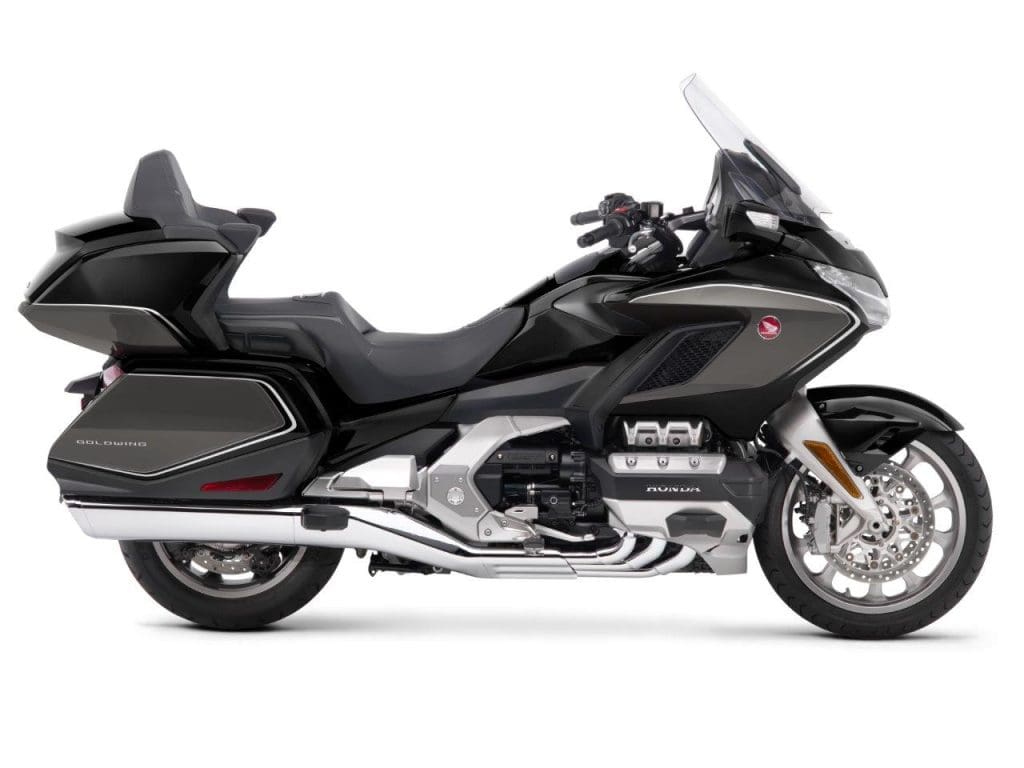 When you think of touring motorcycles before 1974, you often think of Harley-Davidson or Indian motorcycles with huge front fairings and wind deflectors, with a couple of saddlebags across the rear, and a long, straight road like Route 66 stretching out in front of them. Either because of those motorcycles being the only touring options of the time, or because of popular movies (Easy Rider, anyone?), it stuck with many that the American motorcycle was meant to be a touring and cruising monster. In 1974, however, Honda lined all of those American motorcycles up along a wall and proceeded to run down the line with their hand out, giving each of them a good slap in the face.
When you think of touring motorcycles before 1974, you often think of Harley-Davidson or Indian motorcycles with huge front fairings and wind deflectors, with a couple of saddlebags across the rear, and a long, straight road like Route 66 stretching out in front of them. Either because of those motorcycles being the only touring options of the time, or because of popular movies (Easy Rider, anyone?), it stuck with many that the American motorcycle was meant to be a touring and cruising monster. In 1974, however, Honda lined all of those American motorcycles up along a wall and proceeded to run down the line with their hand out, giving each of them a good slap in the face.
The 1974 (model year 1975) GoldWing GL1000 was a complete revelation on how motorcycle touring should be approached. Instead of a rumbling V-twin, hanger bars, an oversized front deflector, and the like, the GL1000 had a 1-liter flat-four that chucked out 80 HP and 63 lb-ft of torque. That flat-four brought together the power advantage of Japanese engines with the torque advantage of the boxer style of engine, and it revved smoothly with a great torque curve. All of a sudden, the vibrating rumble of a tourer was replaced with the naturally counterbalanced punch of a boxer, and it could go so much farther per tank of gas as well.
While there have been many generations, throughout them all Honda’s big-engined beast of a tourer has consistently lead the pack. Of course, other Japanese companies, as well as many European companies, noticed the near-instant success of the GoldWing, which completely redefined the long-distance touring segment. Moto Guzzi made a touring version of their V7 cruiser. Yamaha took the idea of the V-twin bagger tourer and ran with it, creating the Star line of motorcycles. Kawasaki turned some of their sportbikes into sport-tourers, like the Concours line of bikes. But the GoldWing always was, and for the foreseeable future, king of the hill.
The current 2021 GoldWing lineup has to lead the charge in a lot of areas regarding safety and comfort, with the GoldWing Tour Airbag DCT being the only major production motorcycle with an airbag built into the front tank top to deploy during head-on collisions. As well, all model options of the GoldWing for 2021, save for the absolute base model, a DCT transmission as standard that can either be manually commanded from the left grip cluster, or left in automatic to allow the rider to enjoy the ride.
Related Links:
- 2021 GoldWing model overview
- CruiseMan’s Garage video review of the 2021 Honda GoldWing Tour DCT. A “good ol’ Southerner review,” as Cruiseman would say
- RevZilla’s 2018 review of the Honda GoldWing Tour
Honda CRF & XR
In the late 1970s, a lot of manufacturers had realized the potential of off-road, dirt, and dual-sport bikes. Every company was in it to win it, from Kawasaki out of Japan, to Benelli out of Italy, even Bombardier with the Can-Am competition bikes out of Canada. During this time, Honda had been lagging behind those manufacturers on the pure horsepower front, but they were watching and taking notes of where their bikes, compared to all the others, could be improved. So when the XR500 and XR500R models suddenly came to market in 1979, everyone turned to look.
Here was a completely reinvented dual-sport (XR500) and off-road competition bike (XR500R) that grabbed the segment by the hair, yanked it down to eye-level, and said “Look here, son!” The initial models came with a fairly standard 18-inch rear wheel, but came with a 23-inch front wheel that was meant to make it easier for the bike to absorb road degradation like cracks and potholes better, as well as make rock-crawl enduro’s much easier on the competition bike. That wheel choice was quickly unpopular, so the front wheel and tire were quietly resized to 21 inches the very next year. The first models also came with Honda’s new 497 four-valve, four-stroke “pentroof” single, which produced a meaty 41 HP and 34 lb-ft of torque. This engine also introduced the dual-sport world’s first mass-produced dual-carburetor single. The first carburetor was only used for the first 1/4 throttle when a second, larger carburetor would then take over to boost power and the fuel-air mixture.
In the mid-1980s, the XR badge was on an entire line of dual-sports and competition bikes, from the smallest junior XR50 to the monstrous XR650R. Yet, as the 1980s turned into the 1990s and approached the new millennium, there was starting to be some apprehension in the marketplace about buying a dual-sport bike that was in essence a race bike with road-legal bits tossed on.
So in the year 2000, Honda retired its line of CR off-road only bikes, and started the CRF line of dual-sports and dedicated off-road bikes. The XR name continued for the more “hardcore” bikes, but the CRF was marketed from the outset as the friendlier, nicer dual-sport with improved road manners, more trail-riding oriented off-road bits, and improved ergonomics. As well, to make the engines respond smoothly but with decent power, all the CRF models at the time, and many to this day, were and are four-stroke singles that use an “oversquare” design, where the diameter of the cylinder is larger than its stroke. This both allows for a smoother combustion process, as well as reduces reciprocating mass significantly, removing a lot of the “buzziness” that the XR models had.
These bikes have been so successful that the CRF models now make up almost a full third of Honda’s sales in North America alone. Of course, over the years, new and varied models and versions have come out, from the backyard bomber that the CRF125F is, to the adventurous CRF300L Rally, itself derived from the Dakar Rally winning CRF450R Rally competition special. While other manufacturers have dual-sports and off-road bikes, none really turned the segment on its head like the original XR500 did in 1979, and it was only after Honda’s CRF line came out in 2000 that others also said “hey, there’s a real dual-sport market over there, let’s capitalize on it!”
Related Links:

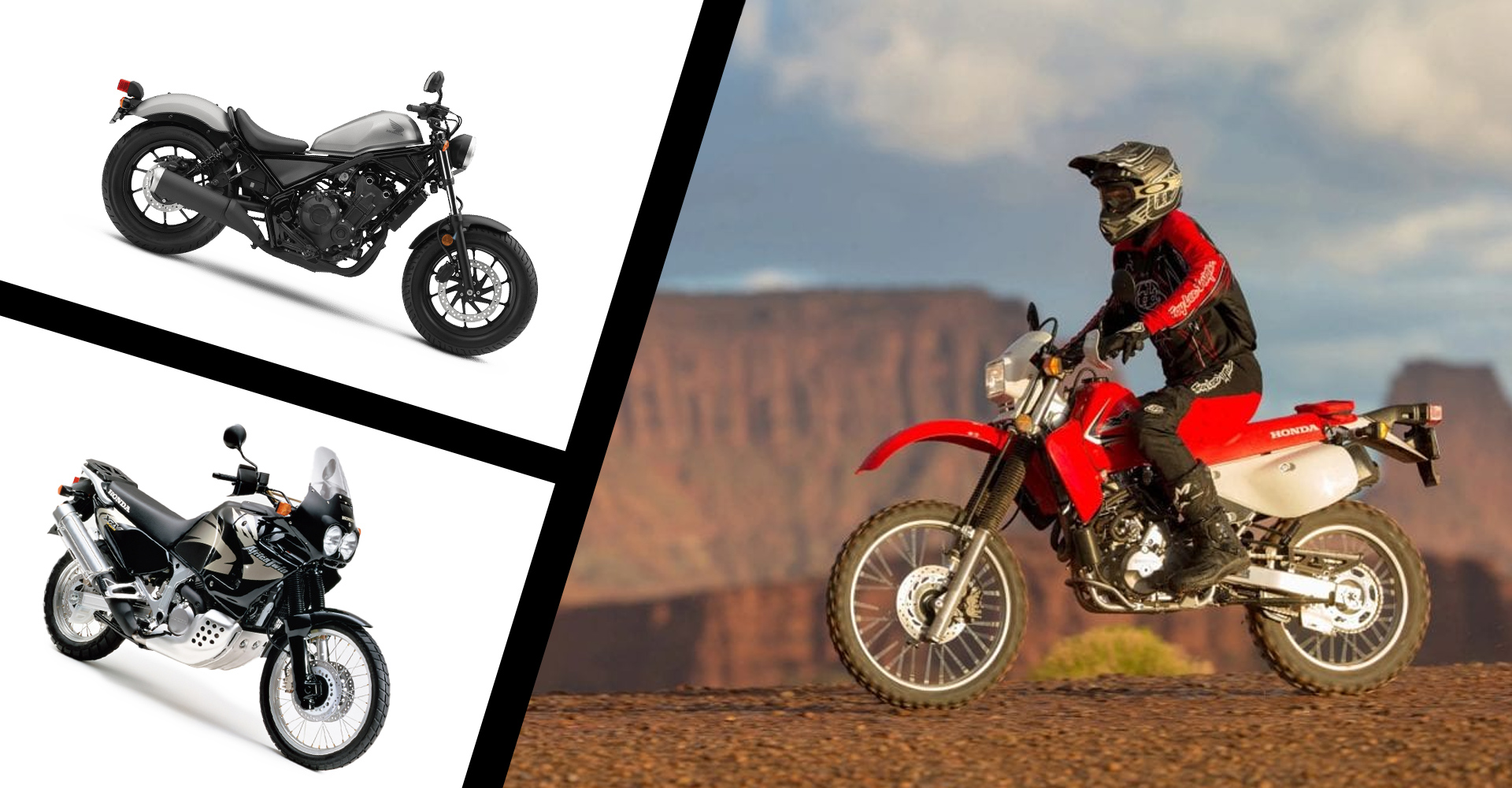
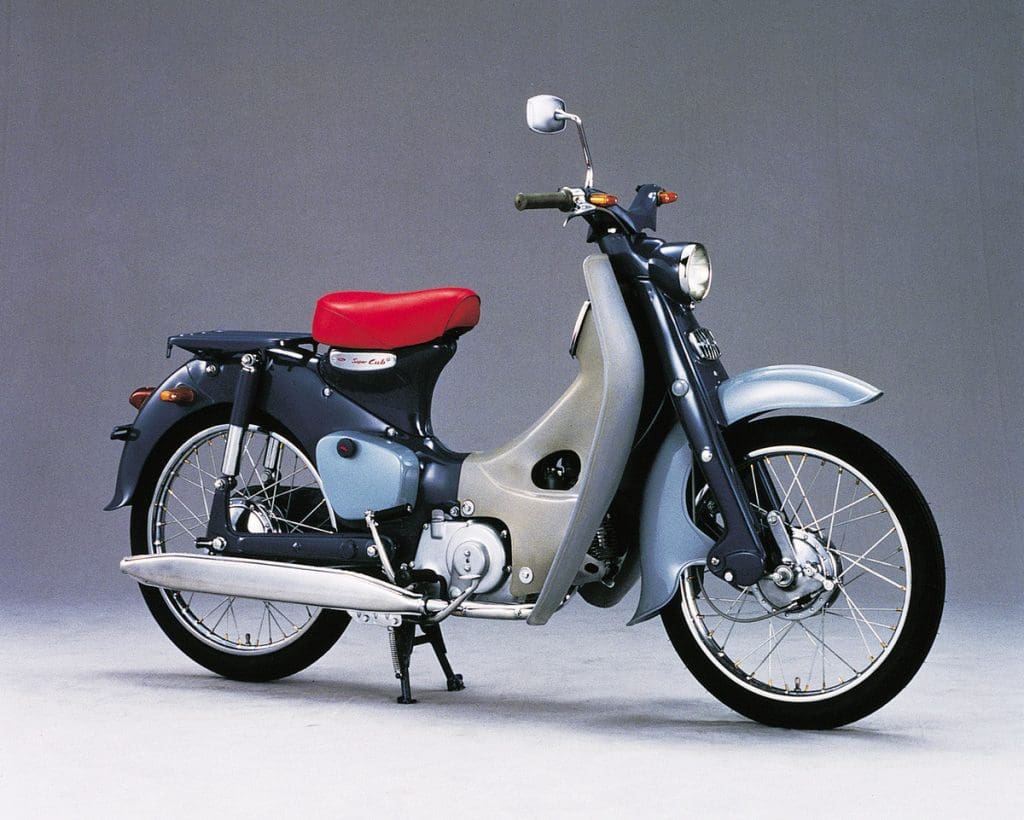
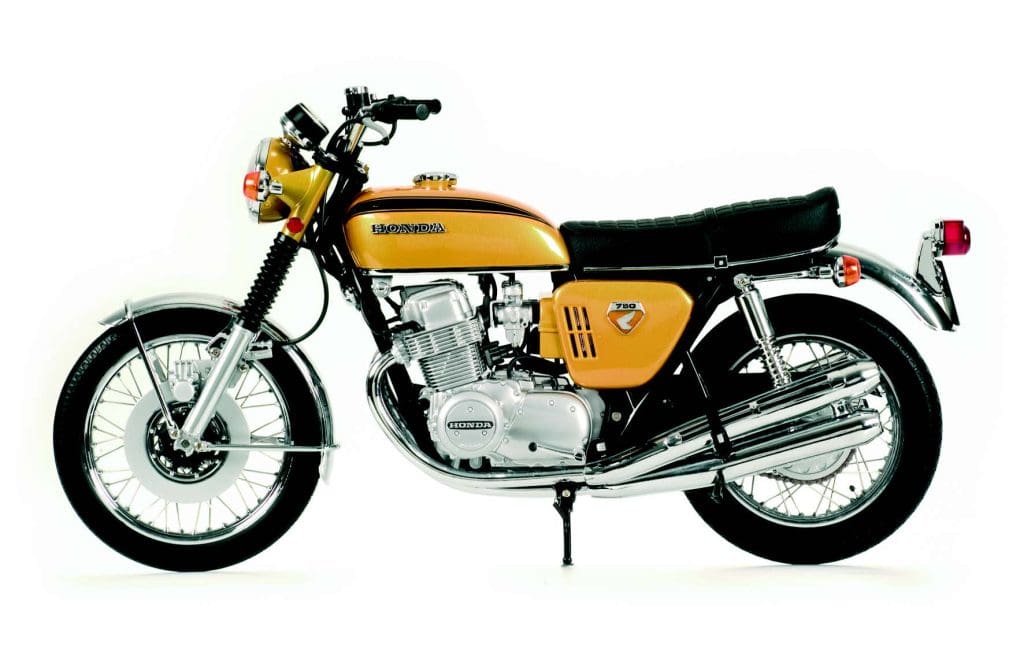
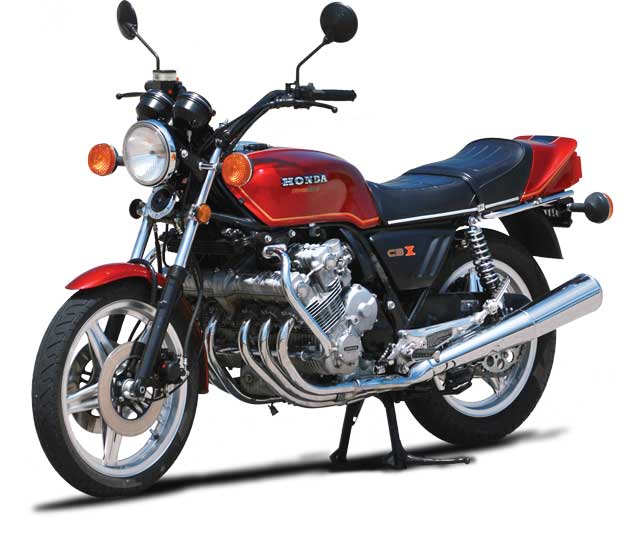
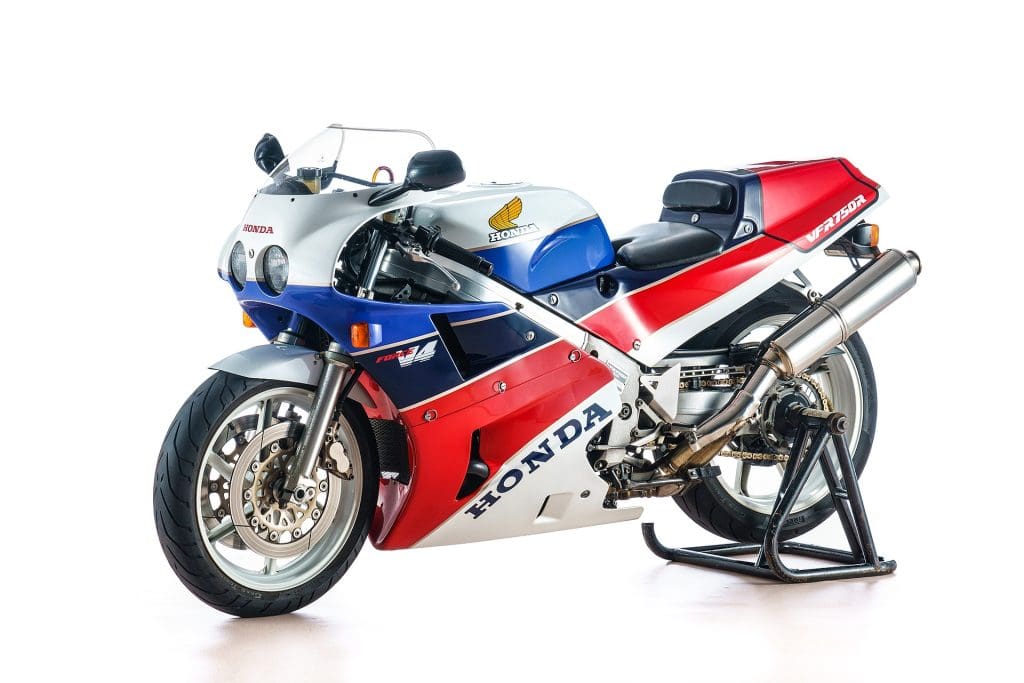
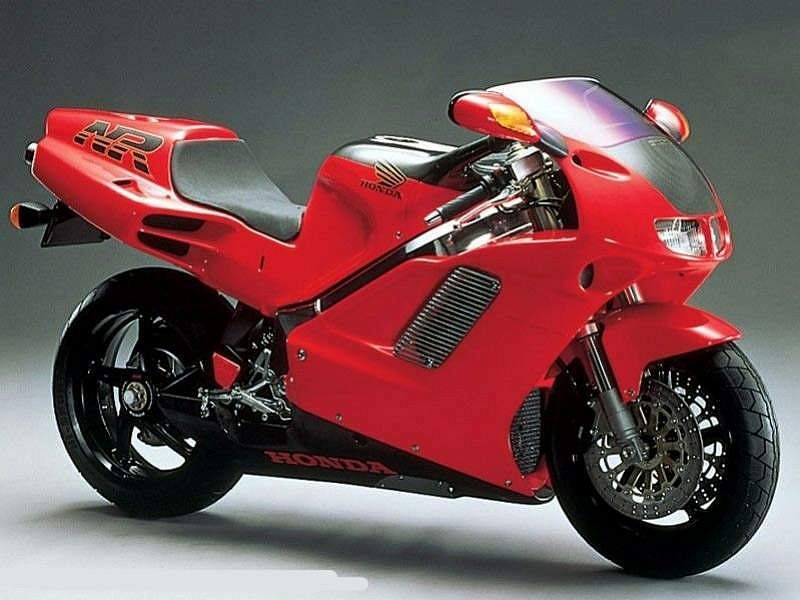
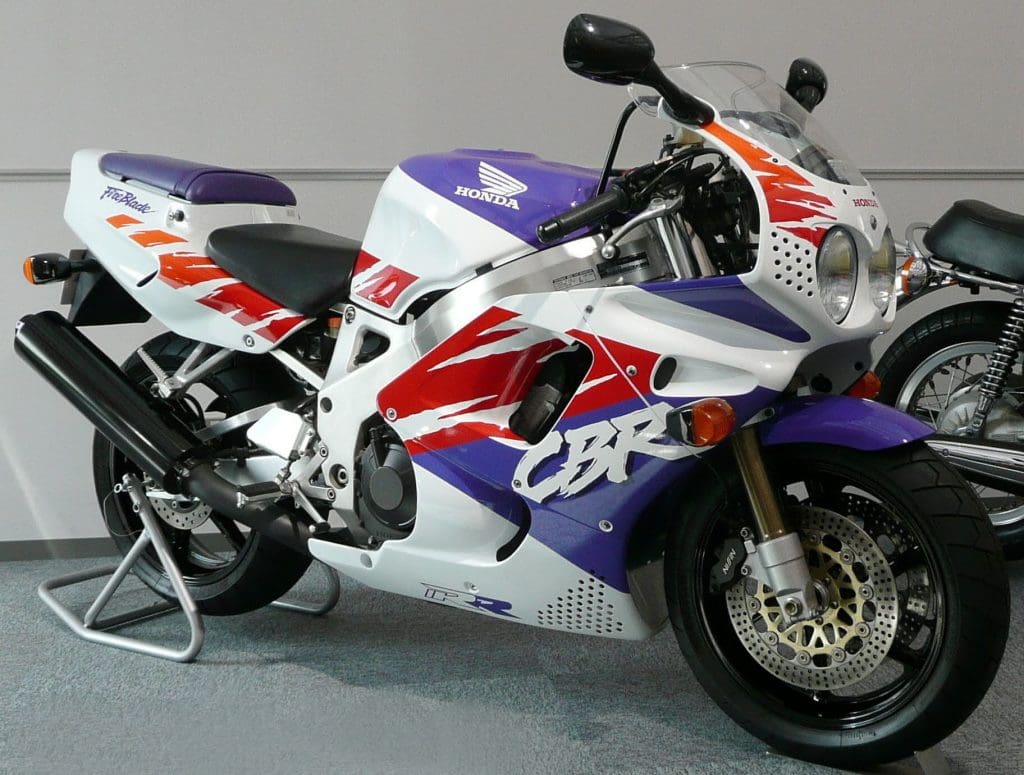
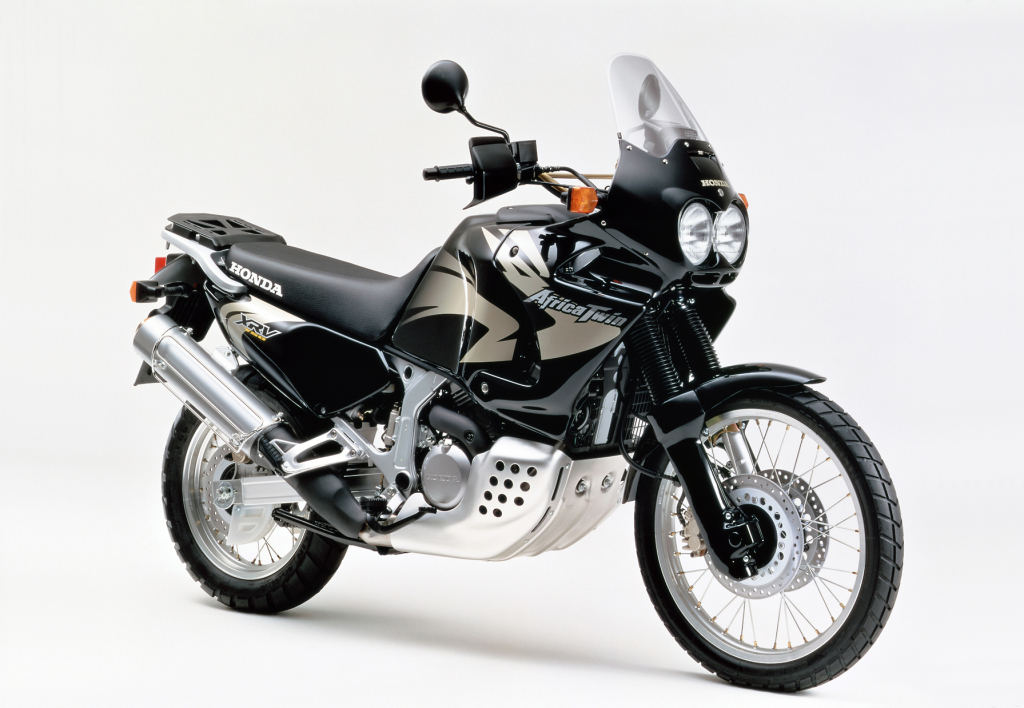
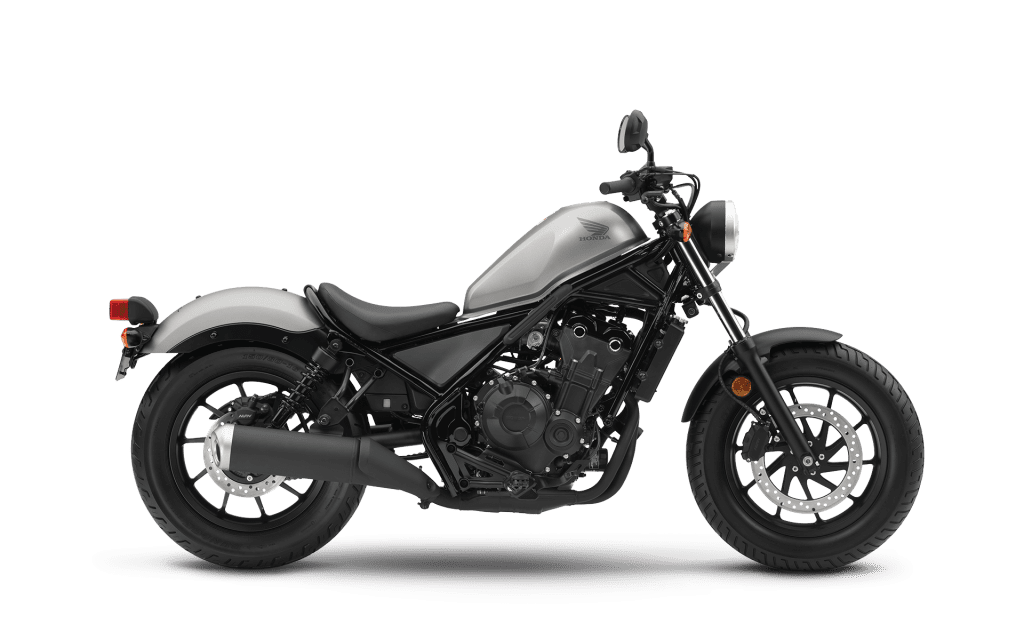
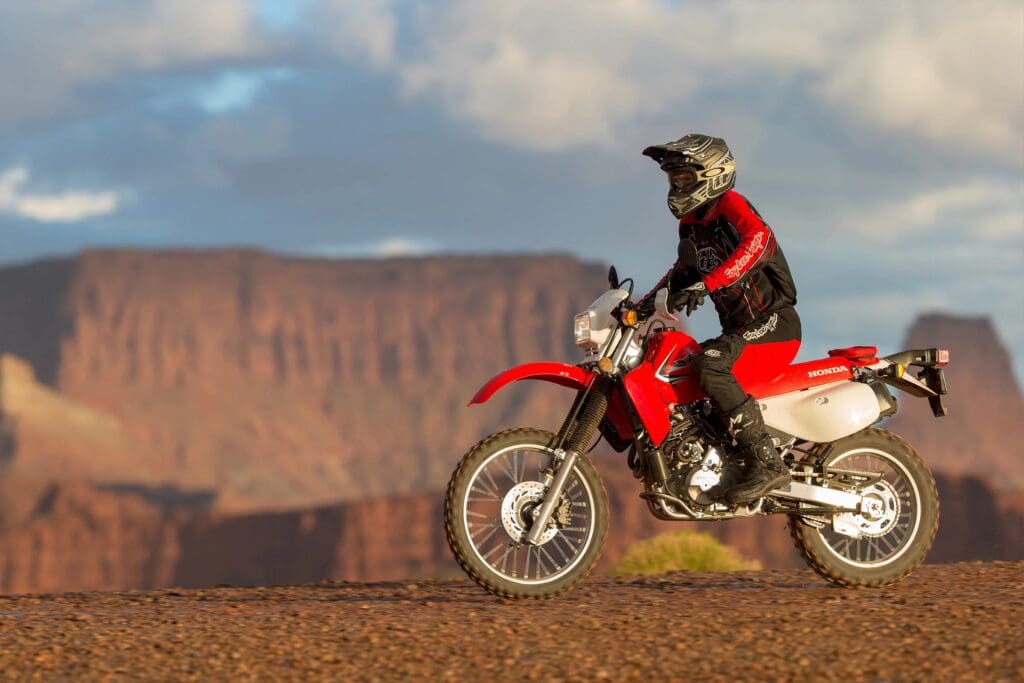

Gold Wing?
Yup I think Simon may have missed a big one there! lol
You’re either very young or you’ve never owned one or both
Blackbird?
Blackbird gets my vote. Also, the engine had a much longer life in other platforms
?? Blackbird engine only went in the Blackbird, nothing else.
1983 Interseptor
My favorite all-time Honda was the VfF500F Over the years I’ve owned many motorcycles, and several Hondas, all really good, well-made machines, but not always awesome bikes – I first rode a friend’s Cub 55cc – the first ever m/c that I rode through summer 1967 , I bought a new CB750 in 1970, that I liked, but didn’t love, and finally, I bought a classic, 31,000 km, 1986 VF500F in 2010, that I loved the most of any of my Hondas… currently considering the new CT125 that’s coming out soon, as my next m/c, just to put around on in my golden years
.
[email protected]
super blackbird…….
The Blackbird was the best but the CBX 1000 was best looking and the Sound
For me seems like you forgot the revolutionary bike that really chanced the global motorcykel marked – and made Honda break through in the world The Honda CB77 (Dream). Bought one back in 1971 followed by a CB450K0 (the black bomber). Another candidate for the list, the first moderne DOHC bike, and one that could compete with the british bikes in speed and certainly quality.
My all time Honda favorites are the 2001 CBR929RR and the Honda 919 aka the Hornet. The CBR929RR was my first Honda and I looked back at my Ducati 900 SS and said never again. Unfortunately for me my CBR was sold because of a divorce.
I’ve owned 3 Honda’s in my life The CT 70 the 750 and an ’78 gold wing ,And loved them all and wish I had them still when I read articles like yours, They truly were inovators and trend setters , and reliable good bikes. Article well done ,Thanks.